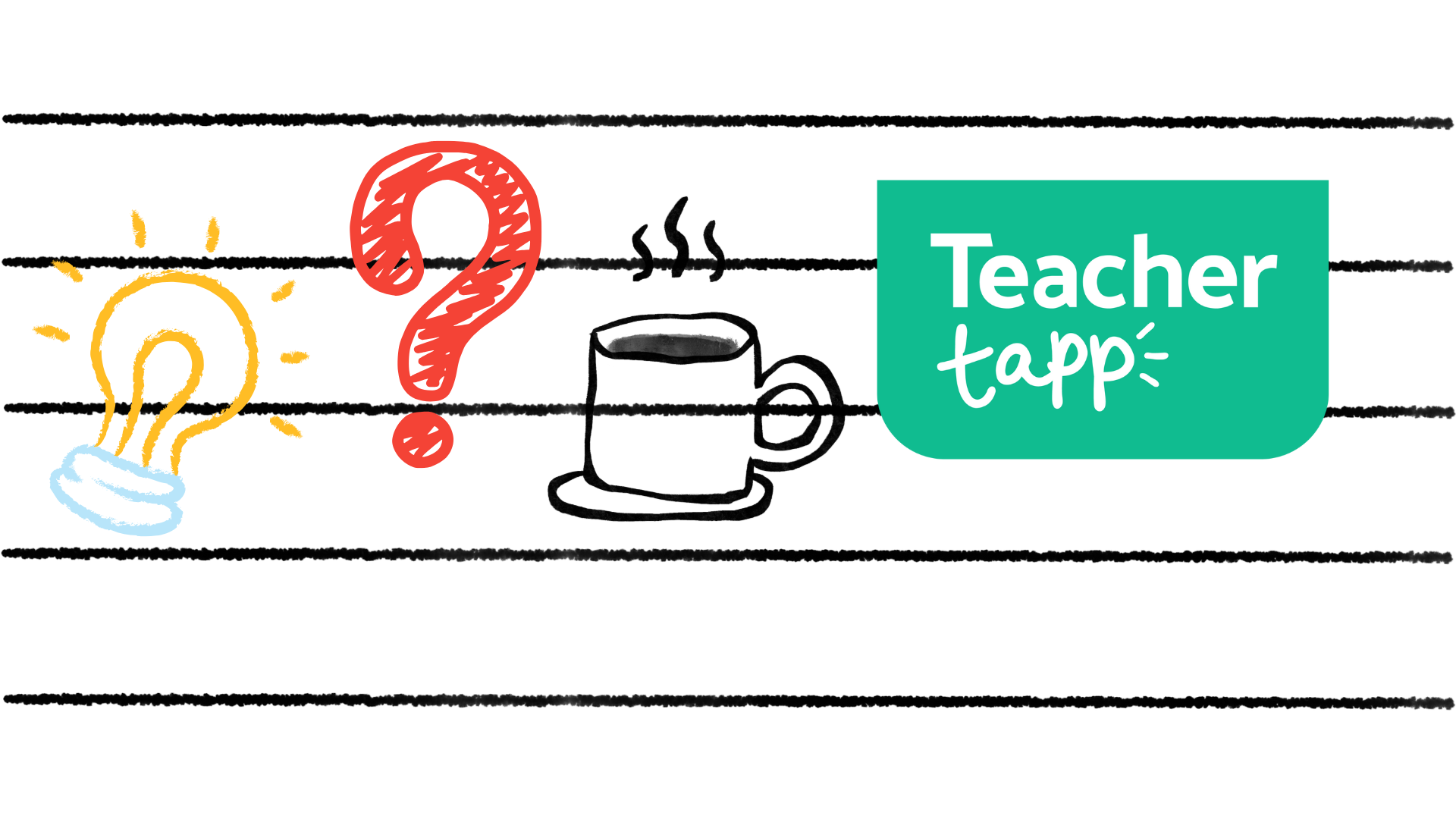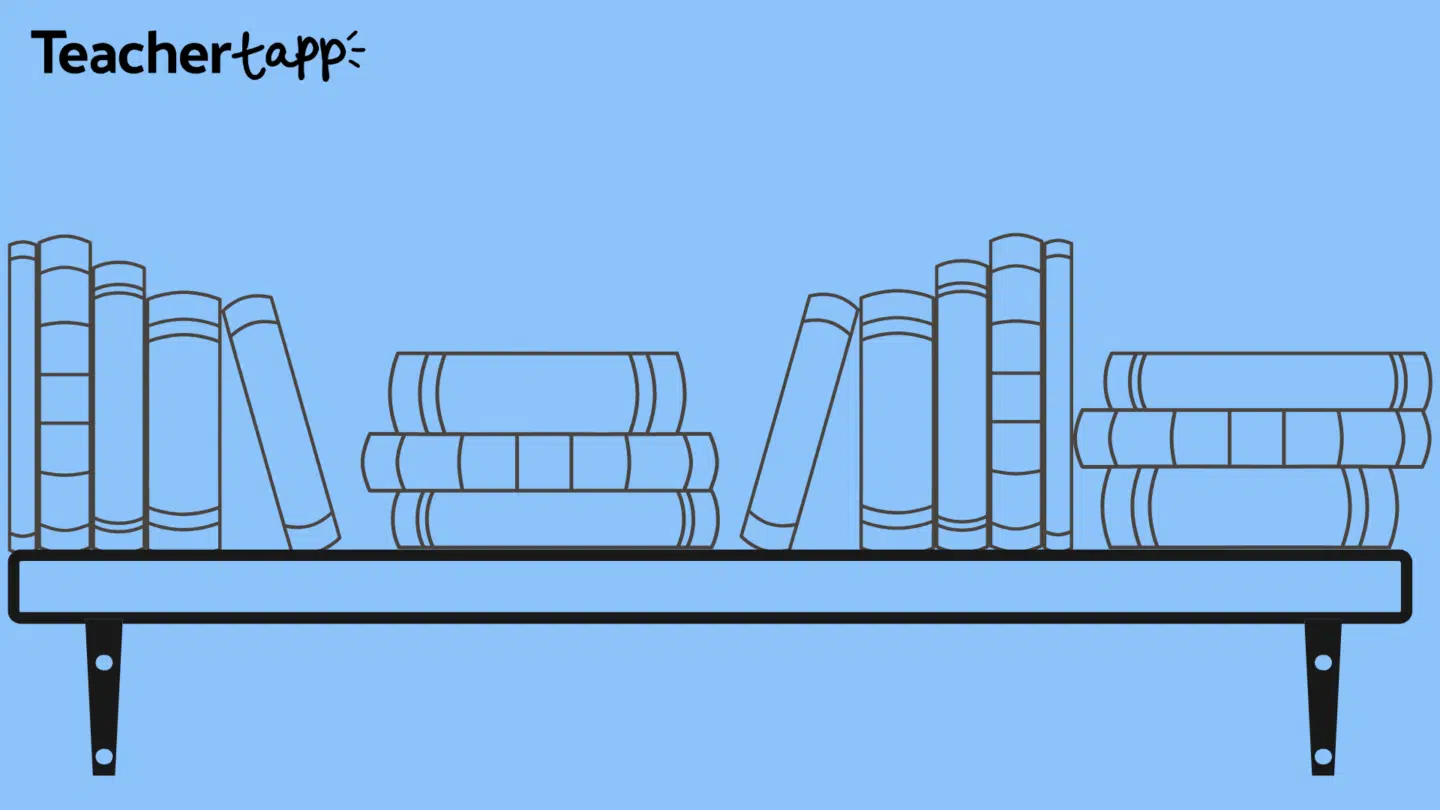Hey there, Tappsters!
We’re now in that time of year when everything seems to happen at once — testing, transitions, new staff inductions, and preparing for handovers. The good news? Teacher Tapp is keeping track of it all and we’ll be sharing the key edu-data insights you need to know.
📬 Have You Seen Our Newsletter?
Did you know Teacher Tapp also sends out a weekly newsletter?
If you’re already subscribed, you might have spotted our brand-new look!
Not on the list yet? Now’s the perfect time to sign up.
To start receiving our newsletters:
- Open the app
- Go to Settings > Contact Preferences
- Tick ‘Yes’ to emails
Also, don’t forget to add hello@teachertapp.co.uk to your contacts or primary inbox — that way, our updates land in your inbox, not your junk folder.
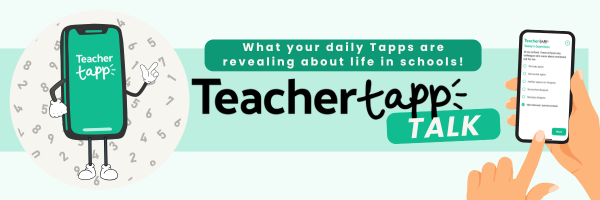
Now, let’s find out what you have told us this week…
Curriculum challenge
With so much work being put into the new curriculum update – it feels like focus right now should be on how students are currently engaging with the curriculum we have.
The Goldilocks level of challenge is crucial for student motivation: too hard, and children are more likely to be unwilling to try, and then too easy leads to slower progress and possibly disruptive behaviour.
Inevitably, there will be children who will find parts of the curriculum too challenging, and consequently will need adaptations, but when that number tips into the majority, teachers will inevitably have a harder task when trying to meet the needs of all the learners in the room.
In fee-paying primary schools, 4% of teachers reported that the curriculum was ‘too hard’ for most or all of their learners. But this more than doubled when looking at primary teachers in the most deprived areas (9%).
Similarly, in fee-paying secondary schools, just 3% reported most or all found the curriculum too challenging, whereas in the most deprived schools, this almost tripled (11%).
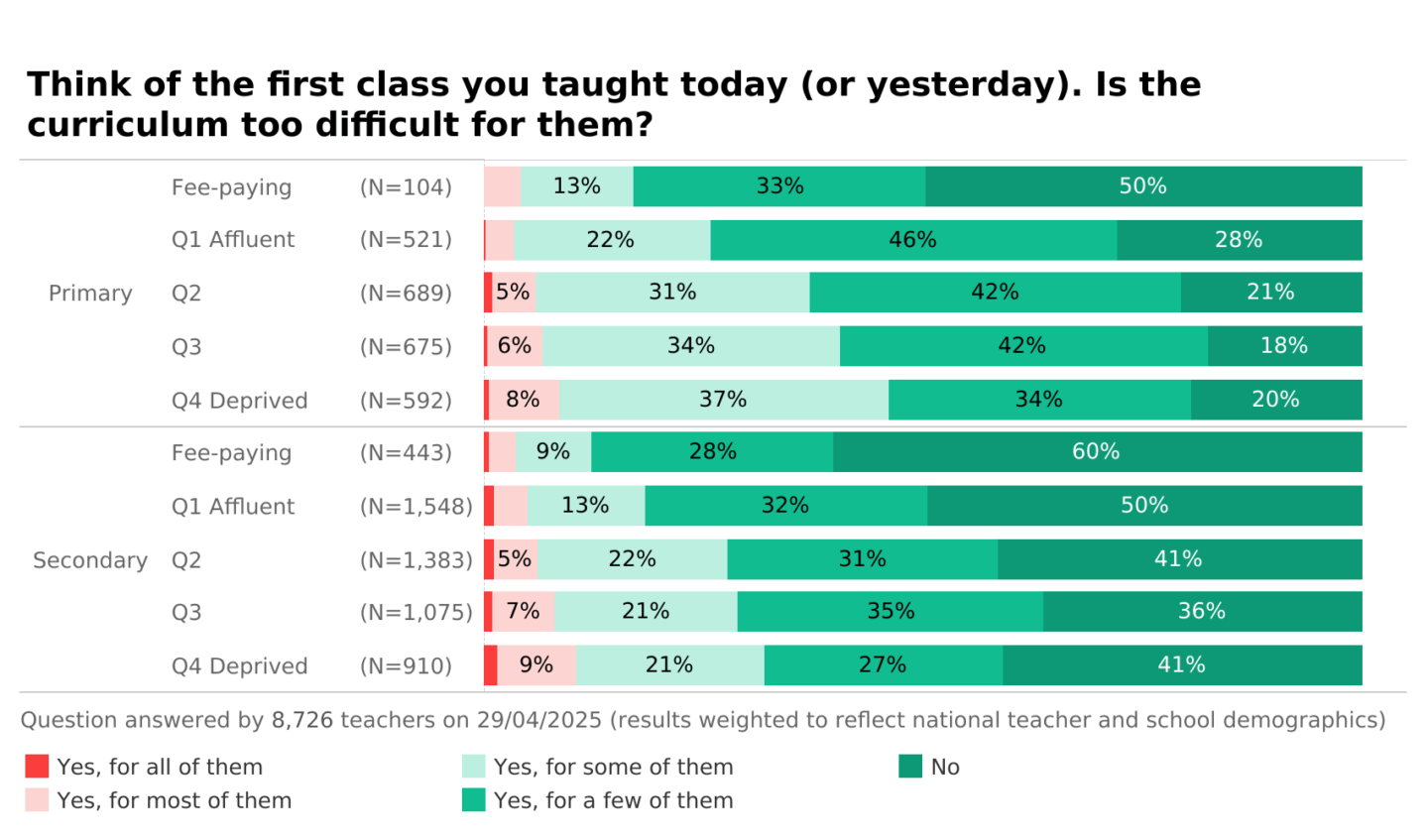
However – there is good news! When we compare to responses from the previous two years, the number of students who ARE able to access the curriculum is going UP.
In 2022 there was clearly a COVID influence on responses; therefore 2023 is a useful comparison point to use to measure progress.
In primary, 27% EYFS/KS1 teachers reported ALL children were able to access the curriculum, up a massive 10 percentage points from 17% in 2023.
KS2 teachers have also seen a rise, moving from 11% in 2023 to 19% today.
In secondary English, back in 2023, 35% of teachers said in a snapshot of one class, ALL of their students were able to access the curriculum, and that jumped UP to 42%.
In secondary maths, there is a very similar pattern: in 2023, 34% reported ALL students could access the curriculum, this has increased by fifteen percentage points to 49%.

What might be happening here? One answer could be that this is a sign of post-COVID recovery. Students in 2023 had recently experienced disruptions due to lockdowns and social distancing, whereas today, that impact has lessened as time passes.
Does this match your experience in school? What alternative interpretations could you make? Send your thoughts to england@teachertapp.co.uk.
Interactive whiteboards
From the work in the curriculum, to work on the board! Interactive whiteboards became popular in classrooms more than 20 years ago – so how many teachers use them with their interactive features?
The answer depends on your subject, it seems. 70% and 69% of EYFS/KS1 and KS2 teachers used interactive features on their whiteboards, but the same is true for just 29% of secondary art and design technology teachers.
Not only that, but not everyone taught in a classroom with interactive whiteboards: a third of language teachers delivered lessons in rooms without an interactive whiteboard, a much higher number compared to just 10% of EYFS/KS1 teachers.
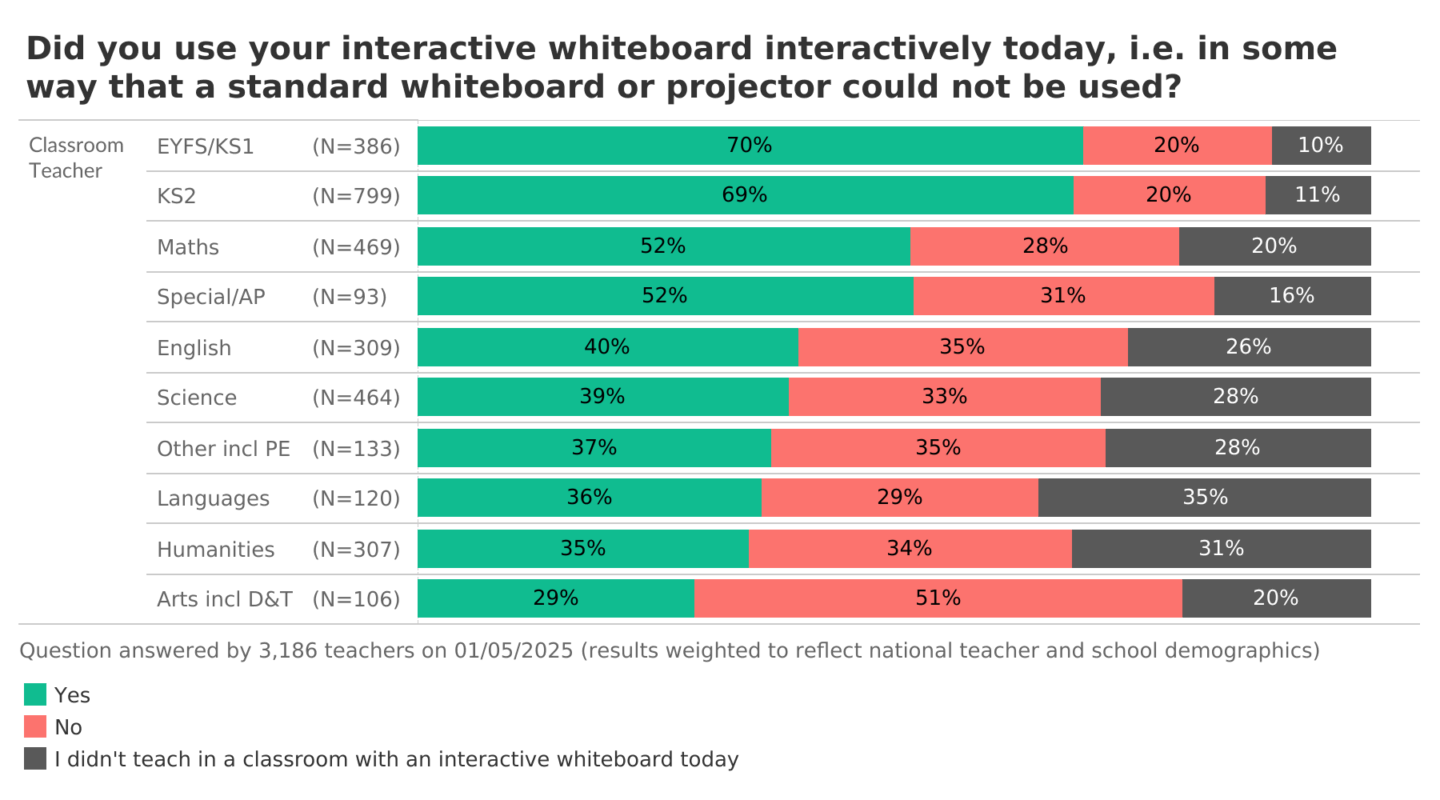
EAL students
Now, let’s move from tools for teachers to the students in the class.
This week, a teacher asked for questions to be put to Teacher Tappers about English Additional Language students. She wanted to find out if the home languages of EAL students were perceived as a resource in the classroom, and whether schools had posters or other instructions telling students to speak only in English.
45% of teachers who are currently teaching EAL students perceive their home languages to be a resource, compared to 55% of teachers who currently do NOT teach EAL students.
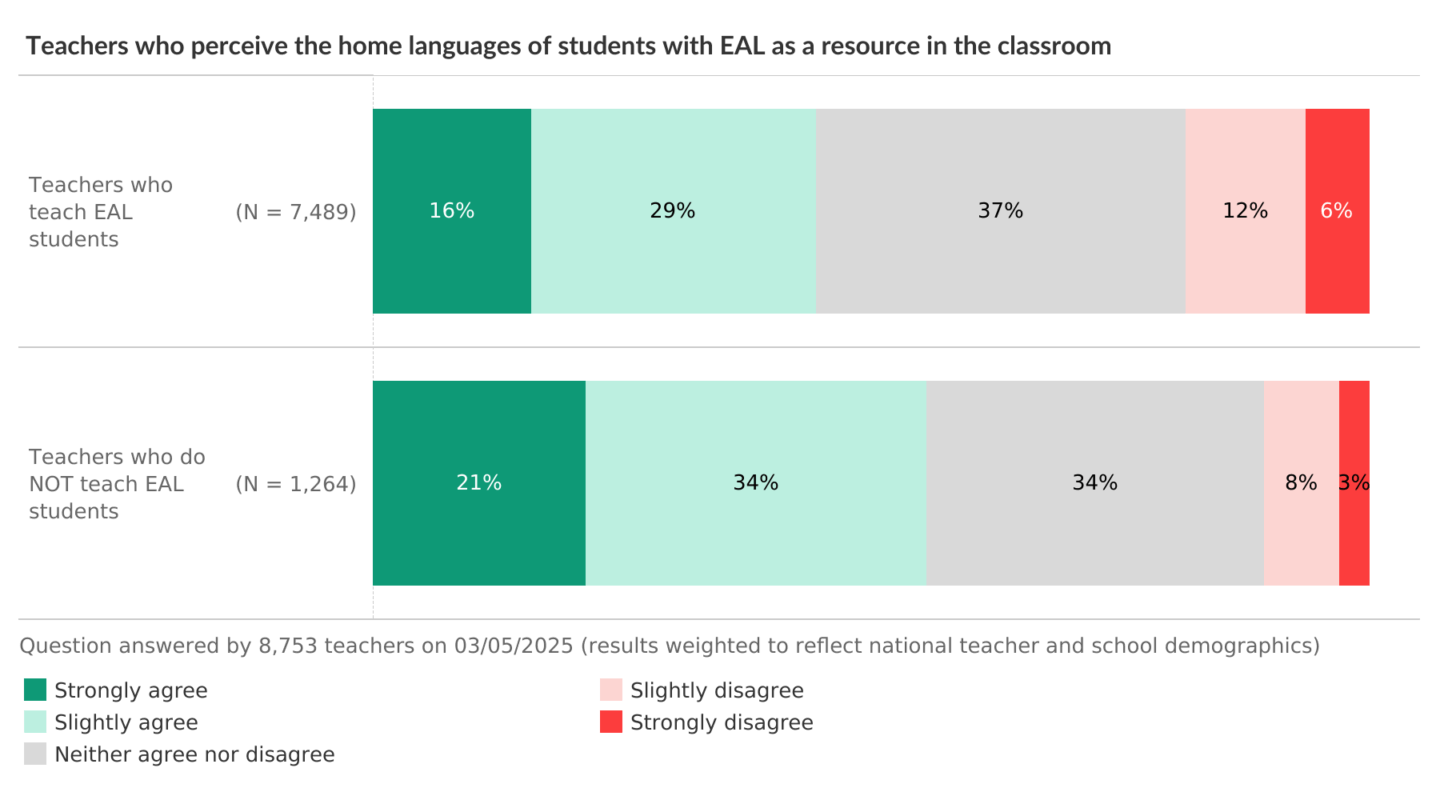
However, the subject you teach can have a significant impact on whether or not you perceive it to be a resource.
Language teachers are MUCH more likely to strongly agree the home languages of EAL students are a resource, when compared to maths and science teachers (48% vs 7%). Clearly, when teaching a new language, an additional language spoken in a classroom can be very helpful!
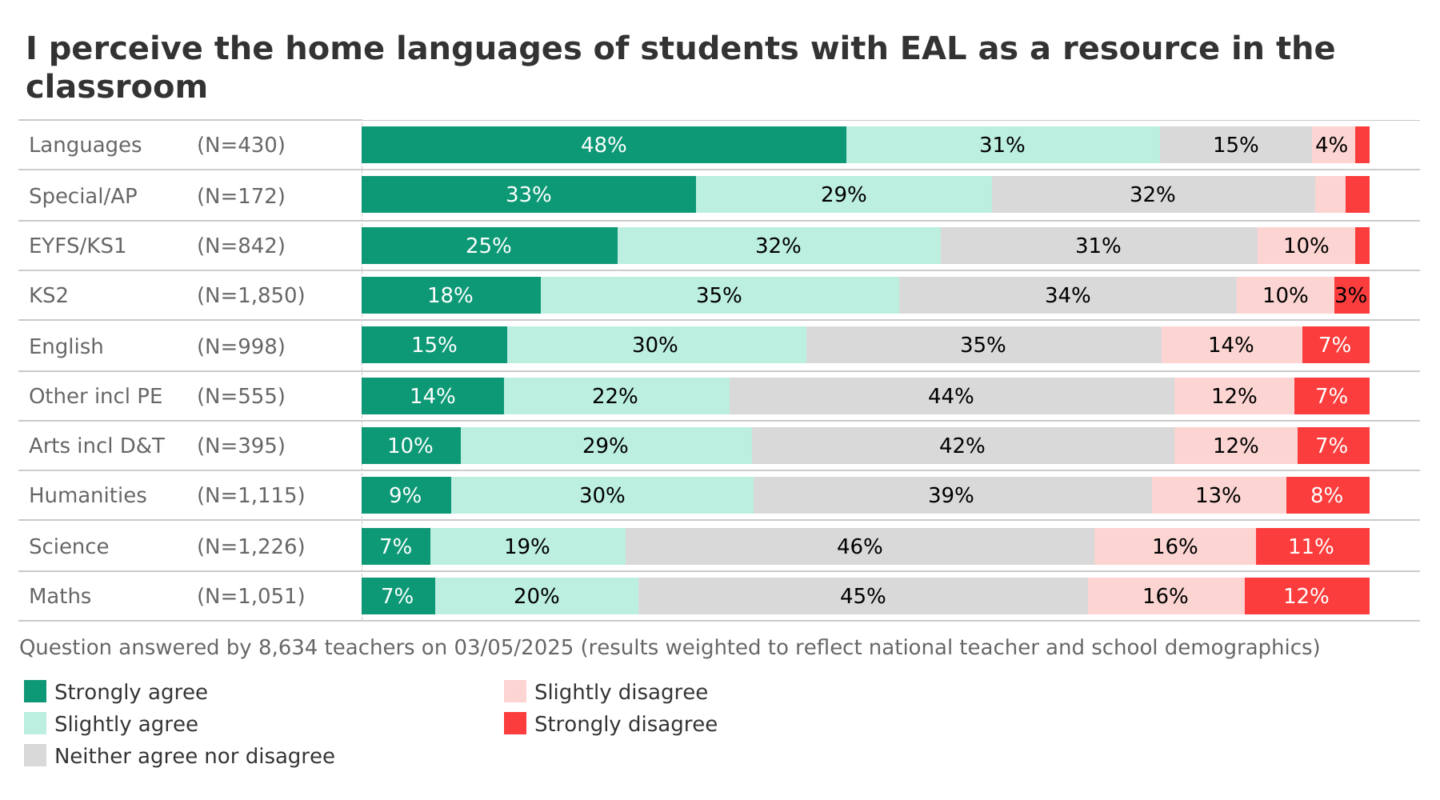
When it comes to schools where students are given instructions to speak only in English, this seems very slightly more common in primary than secondary (3 percentage point difference). 15% of primary teachers say their school issues this instruction, and 12% of secondary teachers say the same.
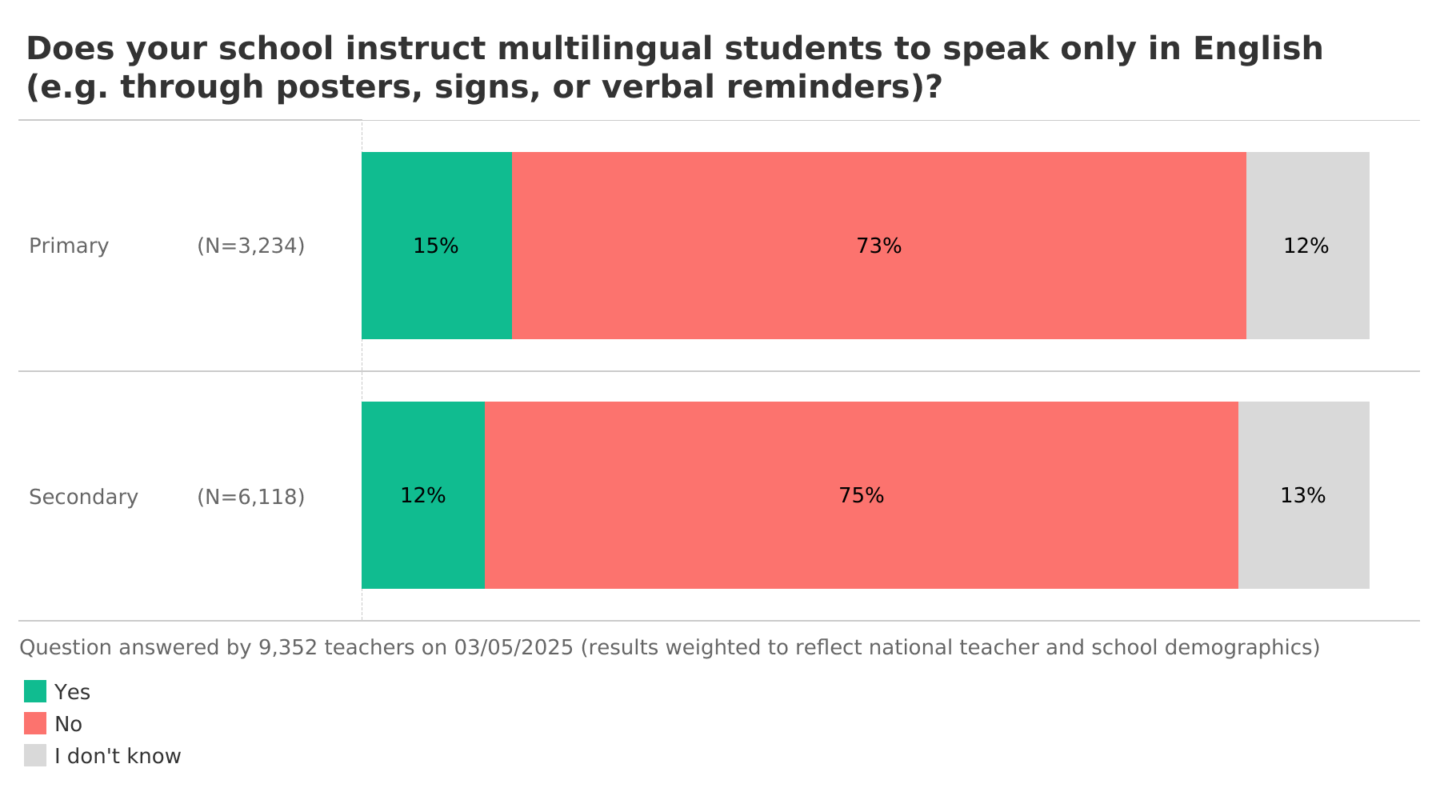
Are there more questions we should ask about the teaching of EAL students in schools? Get in touch with suggestions either through the app using settings > contact us, or by emailing england@teachertapp.co.uk.
Affirmations
Another teacher-suggested question – but this time it’s come from the USA 🇺🇸.
Positive affirmations in the classroom can be used in a number of ways – the teacher can lead them, students can repeat them back – you might encourage pupils to use them during particularly tricky moments like during a test.
But which teachers are using them the most?
They appear to be most popular among teachers of younger learners, with almost half (47%) of KS1 and EYFS teachers, and over a third (35%) of KS2 teachers using affirmations with their class.
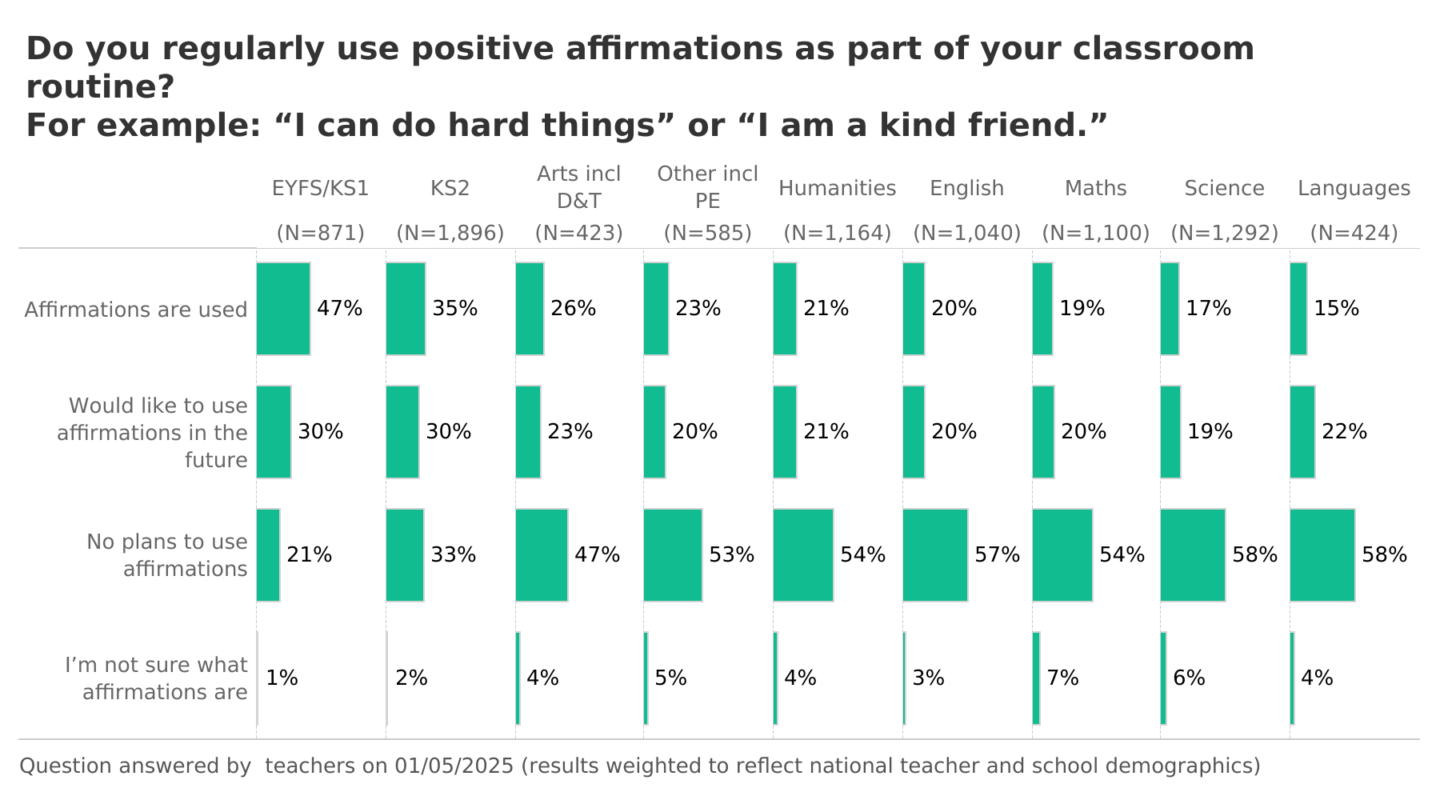
How about other teachers in different parts of the world? 🌎 Over in the US, using affirmations appears far more common. 68% of teachers say they use them regularly, and 20% would like to in the future.
Daily Reads
Last week you were really keen readers! But the most-read blog was on storybooks – a special one for primary teachers!
Have you seen a great blog you think would make a great daily read? Let us know by emailing england@teachertapp.co.uk and we will check it out!


